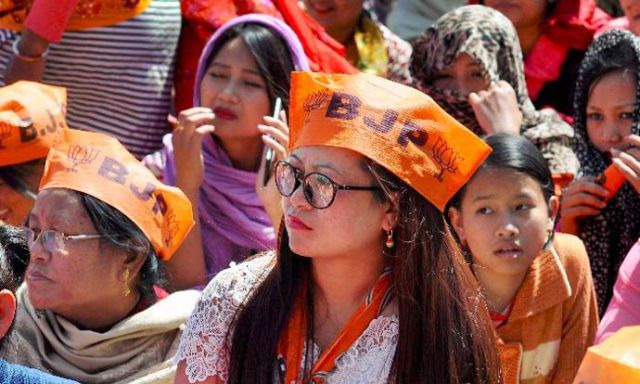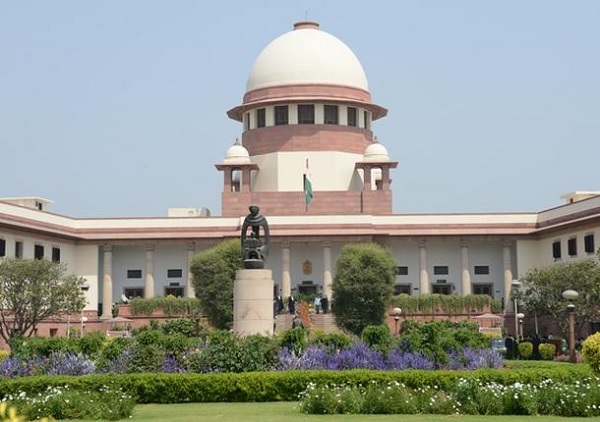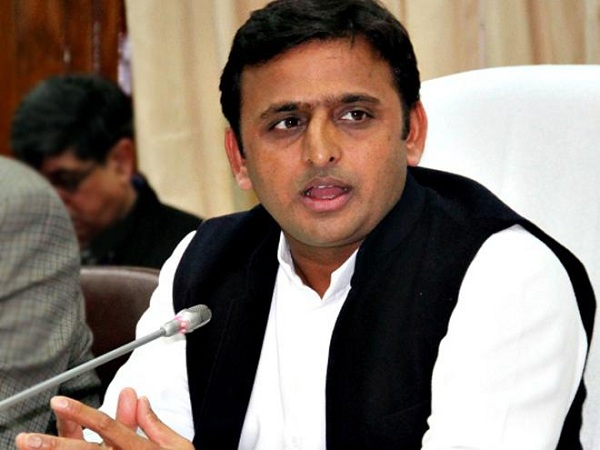
by admin | May 25, 2021 | Opinions
 By Sreeradha Datta,
By Sreeradha Datta,
India’s Northeast has drawn attention for security-related concerns for most of the past seven decades and remained peripheral to the rest of India’s development pattern.
The reasons were many, stemming from generic problems within the region, and also because of the security prism through which mainland India viewed the eight northeastern states — Assam, Arunachal Pradesh, Manipur, Meghalaya, Mizoram, Nagaland, Sikkim and Tripura — which share long borders with Bangladesh, Myanmar, China and Bhutan.
The challenge of the geography, perpetuated by the stereotyped politico-strategic narrative, allowed the insular status of the region to continue. Isolated and inaccessible, with limited transport and communication facilities, the per capita index and overall development fell below the national average. Despite that, the northeastern states — known generically as the Northeast — have recorded better human development index indicators in matters of electricity and toilet coverage, literacy, sanitation and gender rights than several mainland states.
It was in the early 1990s that the “Look East” policy of the Indian government introduced for the first time the perspective of development and growth for the Northeast.
Unfortunately, while the erstwhile “Look East” policy opened up significant bilateral cooperation with Southeast Asia and the ASEAN regional group, the Northeast did not feature much in this initiative beyond the rhetoric. It was only with the coining of the “Act East” policy by Prime Minister Narendra Modi-led government that the perspective about this region has undergone some change. The government has positioned the Northeast as the gateway to Southeast Asia and beyond and, through multi-pronged efforts of a sustained engagement, developing physical connectivity and encouraging greater investment flows, has given rise to a distinct upbeat view about the region.
There are several reasons for this: First, the security establishment in India had long dominated the policy perspective for this region and there was no political will to change the course.
Several developments in the neighbourhood finally led to the recognition of the hollowness of the policy of keeping the region insulated — and infrastructurally deficient — to safeguard it and the rest of the country from deeper incursions by an aggressive China. There is now appreciation of the fact that while the India-China border dispute is not going to be resolved soon, physical connectivity and upgradation of defence infrastructure in the border regions is a vital component for India’s preparedness against any aggression.
India, continuing to struggle with the spectre of the threat emanating from China, belatedly understood the criticality of improving its border zones and commissioned a large number of highways and other infrastructure development plans in Arunachal Pradesh, Nagaland and Manipur. Construction of the four-lane highway between Dimapur and Kohima — travelling on it earlier constituted a driving nightmare — is a case in point.
The Modi government is keen to implement its political intent in the northeast. Having formed governments in Assam, Manipur and Arunachal Pradesh, the Bharatiya Janata Party (BJP) hopes to consolidate its hold over the other five states. Winning coming assembly elections in Meghalaya, Nagaland and Tripura, scheduled around April 2018, is considered critical in implementing some of its national and foreign policy promises.
Ensuring the Nagaland peace talks and moving towards a comprehensive agreement seem critical to the BJP’s plan for the region. It seems an opportune moment to co-opt Naga factions that remain outside the peace talks. With the general election in India scheduled for 2019, the conclusion of the decades-long peace talks with the Naga insurgents groups is bound to yield rich dividends for the government and the region itself.
(The author is a strategic analyst with expertise on India’s eastern neighbours and Northeast. The views expressed are personal. The article is in special arrangement with South Asia Monitor)
—IANS

by admin | May 25, 2021 | News, Politics

Amit Shah
Varanasi : Bharatiya Janata Party (BJP) chief Amit Shah on Saturday said Uttar Pradesh will top developmental charts by 2022 when the state elects the next assembly.
Speaking at the ‘Yuva Udghosh’ programme of the party in Varanasi, the parliamentary constituency of Prime Minister Narendra Modi, the BJP President said the fact that 17,000 first-time voters were getting bonded to the party during the event showed the expression of solidarity and faith in the BJP.
Addressing the gathering of young voters at the Mahatma Gandhi Kashi Vidyapeeth, Shah said the BJP now has governments in 19 states and was serving 80 per cent of the country and boasted of a base of 11 crore workers.
He termed the BJP not a party but a “movement” committed to creating a new India.
Shah said it was possible only in a party like the BJP where an ordinary booth worker could rise through the ranks to become the party President and a tea-seller could become the Prime Minister.
Earlier, tight security was put in place before the arrival of Shah and Uttar Pradesh Chief Minister Yogi Adityanath at the temple town, as Congress workers had distributed pamphlets only a day earlier, alleging Shah’s hand in the death of Central Bureau of Investigation Special Judge Justice B.H. Loya.
More than four dozen youngsters, mostly from the Youth Congress, were detained by the police before the rally.
People, including journalists, sporting black clothes were barred from entering the venue as police feared they could be misused to protest.
Former Congress legislator Ajay Rai, who unsuccessfully contested against Modi from Varanasi in the 2014 Lok Sabha elections, staged a sit-in against the BJP chief.
Congress workers alleged that Shah was not only behind Justice Loya’s sudden death but also billed him ‘tadipaar’ (one banished by court from entering Gujarat).
—IANS

by admin | May 25, 2021 | Opinions
 By Amulya Ganguli,
By Amulya Ganguli,
The case relating to the death of B.H. Loya, the judge who was investigating an alleged extra-judicial killing in Gujarat in which Bharatiya Janata Party (BJP) chief Amit Shah was implicated, is the second legal hurdle which the party is facing.
It crossed the first one with relative ease, but it remains to be seen whether the party will be able to do so this time. The first hurdle was posed by a Special Investigation Team (SIT) inquiry into the incidents of mob violence during the Gujarat riots of 2002.
The SIT, headed by a former Central Bureau of Investigation (CBI) director, R.K. Raghavan, and acting under the Supreme Court’s supervision, exonerated Narendra Modi, who was the state’s Chief Minister at the time of the outbreak.
However, a Vadodara resident, Prof. J.S. Bandukwala, a Muslim human rights activist, who was nearly killed in the riots, expressed doubts about the fairness of the acquittal while the court’s amicus curiae, Raju Ramachandran, said that several “offences” could have been made out against Modi. Raghavan has recently been appointed High Commissioner to Cyprus.
In the latest case, too, Loya’s successor as a CBI judge exonerated Amit Shah. But the case hasn’t been closed like the earlier one because of the doubts that have been expressed about the factors that may have been responsible for the judge’s death of a heart attack. One of the factors is said to be the considerable stress which the judge was experiencing while handling the high-profile lawsuit.
It is not surprising, therefore, that Judge Loya’s death was one of the reasons behind the decision of four senior Supreme Court judges to go public with their various complaints against Chief Justice of India Dipak Misra, including one about the allocation of this particular litigation to a “junior” judge.
Dismayed over the imputation, the judge in question has now requested the Chief Justice to let another judge handle the case. But whoever hears it from now on, it will not only be a long-drawn process but also carried out in the full glare of publicity because of the huge public and media interest that has been aroused about it.
Judge Loya’s death had remained mostly in the background till a reference was made to it by one of the four dissenting judges and a report in a magazine a few days ago quoted one of the late judge’s relatives to suggest foul play in his sudden death at the relatively early age of 48. There was also talk about an offer of Rs 100 crore to him.
None of this is likely to be relished by the BJP. The reason is that, for one, the focus will continue to be relentlessly on its president, reputedly the second-most powerful man in the country, and, for another, at least two deaths will be closely scrutinised, especially by the prosecuting lawyers — those of Judge Loya in 2014 and of Sohrabuddin Sheikh, who died in the fake shootout nine years earlier. His wife and a companion also died unnatural deaths.
In the case about the latter’s death, Amit Shah was also an accused but was given a clean chit by then Supreme Court Chief Justice P. Sathasivam, who is now the Governor of Kerala.
Clearly, it is a messy situation which will be grist to the mills of both the media and of the BJP’s political opponents if only because, suddenly, out of the blue, the conditions in Gujarat in the aftermath of the riots will once again come into the limelight along with questions about the kind of pressure which Justice Loya may have faced since the staged shootouts, though not uncommon in India, are not a natural event.
For the BJP, the reopening of the case hasn’t come at a convenient time. The party is facing a series of elections during the year, including in Rajasthan, Madhya Pradesh and Chhattisgarh, where the anti-incumbency factor is likely to undermine its prospects. Having narrowly escaped defeat in Gujarat, the party will be nervous about the possibility of suffering further setbacks in the three states.
As is known, the party is heavily dependent on the Prime Minister to draw the crowds and on the party President to keep the organisational machine well oiled. If the latter’s reputation comes under a cloud, his clout is bound to be diminished.
That the Congress saw the opportunity to use the situation to gain political mileage was evident from Rahul Gandhi’s call for a high-level probe into Judge Loya’s death within hours of the press conference by the four judges.
While the BJP’s awareness of the damaging potential for the party of the developing situation has made it generally moderate its responses, the party’s myriad trolls have shown no such restraint, describing the dissenting judges as the “Gang of Four” and demanding their impeachment.
Surprisingly, a Rashtriya Swayamsevak Sangh (RSS) functionary has echoed the Hindutva netizens by describing what the judges did as a political conspiracy while the BJP’s uneasy ally, the Shiv Sena, has taken the opposite view by saying that the ruling party at the Centre wants the judiciary to be deaf and dumb. The scene could not be murkier.
(Amulya Ganguli is a political analyst. The views expressed are personal. He can be reached at amulyaganguli@gmail.com)
—IANS

by admin | May 25, 2021 | News, Politics
 New Delhi : Congress leader Shakeel Ahmad on Sunday said the “theory” by Prime Minister Narendra Modi and CBI that former Finance Minister P. Chidambaram and then Telecom Minister Dayanidhi Maran did something in tandem in the Aircel-Maxis case is too far-fetched.
New Delhi : Congress leader Shakeel Ahmad on Sunday said the “theory” by Prime Minister Narendra Modi and CBI that former Finance Minister P. Chidambaram and then Telecom Minister Dayanidhi Maran did something in tandem in the Aircel-Maxis case is too far-fetched.
In a tweet, the Congress leader said Chidambaram had strained relation with Maran.
“Attempts by PM Modi & Central Bureau of Investigation (CBI) to float a theory that Mr P Chidambaram and Mr DN Maran have done something in tandem to benefit each other in Aircel-Maxis Deal is too far fetched. Their strained relation was known to all of us, when they were in government. I was MoS with both of them,” said Ahmad in a tweet.
The Enforcement Directorate (ED) on Saturday searched the houses of Chidambaram and his son Karti in Delhi and Chennai in connection to the Aircel-Maxis case.
Following the raids Chidambaram had said that there is no FIR against him or his son in the Aircel-Maxis case.
“There is no predicate scheduled offence. Hence the ED has no jurisdiction. Yet the ED, at the instance of the government, continues to misuse its powers.
“I belong to the Opposition party. Let the government misuse the ED. I shall neither bend nor break and I shall continue to speak and write,” he said.
—IANS

by admin | May 25, 2021 | News, Politics

Akhilesh Yadav
By Mohit Dubey,
Lucknow : Banished into political hibernation after a humiliating drubbing in the 2017 assembly elections, the Samajwadi Party (SP) of late seems to have got its voice and bearings back, led by its young leader and party chief, former Chief Minister Akhilesh Yadav.
After a gap of almost 10 months, the Yadav scion has, in the past one month, not only been vocal in his criticism of the Yogi Adityanath government but has also established the “missing connect” with party cadres, specially the youth.
Reduced to 47 in a 403-member assembly, the SP has been struggling to remain centre-stage even as the 325-member-strong Bharatiya Janata Party (BJP) gallops from one electoral victory to another in the state. Akhilesh has been meeting party workers from every nook and corner of the state in the past few weeks for their feedback on what went wrong in the assembly polls where its numbers shrank from a high of 224.
He has also begun work on setting the caste combinations and demographic arithmetic right. Party insiders say that “bhaiyya-ji” — as he is fondly called by his followers — has decided to stop sulking at the electoral losses and rather garner strength to take on the BJP’s might with renewed vigour. Yadav is said to have worked the wires with opposition party leaders in December 2017, trying to forge a front that could collectively counter the BJP’s might.
This came as a surprise to many, mostly those who think Akhilesh Yadav is hesitant in getting off the high horse and getting into “realistic” politics of “some sense, camaraderie”. Yadav not only initiated a process where opposition party leaders were brought on the same page against what the SP terms as manipulation of the electronic voting machines (EVMs) but has also authorised state party leaders to begin similar talks with like-minded leaders and legilsators in other parties.
“We are trying to take the help of all parties in exposing the BJP,” state spokesman and former minister Rajendra Chowdhary said. Yadav himself has pointed out that he has “understood the game of the BJP” and would now “take on the electoral war of the BJP in their own style”.
“Loha, lohe ko katta hai, ab hum Bhajpa ko usi ki bhasha mein samjhayenge (in a battle of equals, the BJP will be paid back in its own coin)”, Yadav declared at a recent presser.
The SP is already admitting in its fold leaders of various castes like Nishads, Thakurs and Brahmins — and a lot of Muslims have also returned to the party in the past few weeks. The party has so far distanced itself from the Congress and is focussing on rebuilding its cadre and boosting the morale of the crestfallen faithful. But is this enough? Opinion is divided.
While political observers see a shift in Akhilesh’s attitude of late and view it as a welcome sign that he is trying to unite the opposition forces and simultaneously rebuild the SP, they feel a sustained campaign against the BJP government, both at the centre and the state, is the need of the hour. Reining in the lumpen cadre in the party is another challenge. At a recent press conference, his cadres took over the auditorium, forcing journalists to leave in a huff.
Akhilesh finally apologised for the unruly behaviour of his party cadres. Clearly, he realises the pitfalls of being caught in the old image of the party. Now, time will tell how much he can change his own party, make it battle ready and challenge the might of the so far unstoppable BJP.
(Mohit Dubey can be contacted at mohit.d@ians.in)
—IANS





